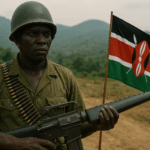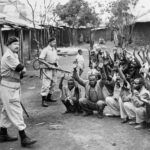Islam har hatt stor innflytelse på vestafrikanske samfunn fra 800-tallet og fremover, og har formet handelsnettverk, styresett, utdanning og kultur. Gjennom århundrene kom den gradvis inn i regionen gjennom handel på tvers av Sahara, og nådde urbane sentre, handelsbyer og kongelige hoff til ulike tider og i ulik grad. Spredningen var ujevn: I noen stater tok hoffene i bruk religionen før den ble mer utbredt i befolkningen, mens man på landsbygda ofte beholdt den opprinnelige religiøse praksisen ved siden av islam.
Hva denne artikkelen dekker: sentrale læringssentre, manuskriptkultur, utdanningspraksiser, store historiske skikkelser og utfordringene ved å rekonstruere historien fra flere kilder.
Tidlig spredning og regional kontekst
Islam kom gradvis inn i Vest-Afrika fra 700-tallet og utover, først og fremst langs handelsrutene på tvers av Sahara. Nordafrikanske handelsmenn brakte med seg gull, salt, tekstiler og islamsk lære. Gjennom handelsnettverkene spredte religiøse ideer, rettsvitenskap og lese- og skriveferdigheter seg parallelt med handelen.
- Herskere og eliter: Ulike stater tok i bruk islam til ulike tider og i ulik grad, og i mange stater gikk hoffets adopsjon av islam forut for en bredere folkelig forankring. I Ghana, for eksempel, var islam mest synlig i handelssentrene og ved hoffet, mens mange lokalsamfunn i innlandet beholdt sine opprinnelige religiøse systemer.
- Urbane knutepunkter: Mali, Songhai og mindre kongedømmer hadde sentre for lærdom, handel og religiøst liv, som i varierende grad blandet islamsk og lokal praksis. Noen herskere, som Mansa Musa av Mali, var kjent for å fremme islam ved hoffet, og finansierte moskeer og lærde.Bevis: Arabiske krøniker, reiseskildringer, arkeologiske levninger og muntlige overleveringer gir hver for seg innsikt, men har sine begrensninger. Samtidige fortellinger, som Ibn Battutas reiser på 1300-tallet, er rike på detaljer, men krever nøye kontekstuell lesning.
Timbuktu: Afrikas vitenskapelige knutepunkt
Timbuktu, som ble grunnlagt på 1100-tallet nær Niger-svingen, fikk stor betydning under Mali på 1300-tallet og nådde sitt høydepunkt av vitenskapelig berømmelse på 1400-1600-tallet under Songhais beskyttelse.
- Institusjoner: I byen fantes det moskeer, madrasaer og private studiesirkler som la til rette for undervisning i koranstudier, juss (fiqh), teologi, historie, astronomi, medisin og poesi. Undervisningen kombinerte ofte moskébaserte forelesninger med læretid under fremtredende lærde.
- Biblioteker og manuskripter: Timbuktus biblioteker og private samlinger har bevart tusenvis av manuskripter, og katalogiserings- og digitaliseringsprosjekter fortsetter å forbedre estimatene. Ajami-manuskripter - lokale afrikanske språk skrevet med arabisk skrift - viser hvordan islamsk lese- og skriveferdighet ble tilpasset regionale språk og målgrupper.
- Bemerkelsesverdige forskere: Ahmed Baba (1556-1627), jurist og historiker, er en sentral skikkelse i Timbuktus intellektuelle arv. Han gikk en kort periode i eksil etter den marokkanske erobringen (tidlig på 1600-tallet), men fortsatte å skrive mye og etterlot seg verk som det fortsatt refereres til i dag.
Primærkilder: Reiserapporter, lokale krøniker og muntlige fortellinger fremhever Timbuktu som et pulserende lærdoms- og handelssentrum, samtidig som de gjenspeiler eksterne observatørers forutinntatthet og begrensninger.
Andre viktige læringssentre
- Gao: Som hovedstad i Songhai støttet Gao lærde, domstolsadministratorer og biblioteker, og knyttet regionale handels- og utdanningsnettverk sammen. Djenné: Djenné var berømt for sin store moské, og her fantes madrasaer og manuskriptsamlinger. Djennés byplan og offentlige rom la til rette for lærde diskusjoner og sosial interaksjon, noe som bidro til en særegen intellektuell kultur. Disse byene var mer enn religiøse knutepunkter: De var kommersielle, kulturelle og politiske sentre der lærde, kjøpmenn og herskere samhandlet. Denne krysspollineringen bidro til utviklingen av spesialisert kunnskap innen jus, medisin, astronomi og litteratur.
Religiøst mangfold og synkretisme
Islamiseringen i Vest-Afrika var ujevn og kompleks. Elitene i byene og handelssentrene adopterte ofte islamsk praksis først, mens befolkningen på landsbygda beholdt sin opprinnelige tro. Synkretistisk praksis oppstod, der islamske ritualer ble blandet med lokale skikker, høytider og åndelige tradisjoner. Religiøse lærde formidlet noen ganger mellom islamsk ortodoksi og lokale forventninger, noe som førte til unike former for trosuttrykk.
Pedagogiske strukturer
Utdanningen i Vest-Afrika var ikke enhetlig. Undervisningen foregikk i moskésentrerte klasserom, private studiesirkler og lærlingprogrammer. Studentene lærte direkte fra de lærde, lærte tekster utenat og deltok i debatter og problemløsningsøvelser. Dette systemet la vekt på å mestre tekster, muntlig resitasjon og veiledning i stedet for den formelle forelesningsbaserte modellen som var vanlig ved europeiske universiteter.
- Læreplan: Juridiske studier (fiqh) sto sentralt, men pensum omfattet også teologi, medisin, astronomi, matematikk, poesi og historie.
- Språk og skript: Manuskriptene ble produsert på klassisk arabisk og ajami, noe som gjenspeiler både innføringen av islamsk lese- og skriveferdighet og tilpasningen til lokale språk.Manuskriptkultur
Timbuktus manuskriptkultur er kjent for sin bredde og dybde.
Øyeblikksbilde av manuskriptet
- Materialer: Papir og pergament
- Språk/skript: Klassisk arabisk og Ajami
- Emner: Juss (fiqh), teologi, historie, astronomi, medisin, poesi
- Bevaringsspørsmål: Varme, fuktighet, tidligere plyndring og spredning; moderne digitalisering og lokal forvaltning er sentralt for bevaring
Forvaltningen var desentralisert: Familier, lærde og moskeer forvaltet samlingene over generasjoner. Eierskapet gikk ofte i arv i slekten, noe som formet både bevaringspraksisen og sirkulasjonen av kunnskap.
1591 Marokkansk erobring
Den marokkanske intervensjonen forstyrret Songhais politiske strukturer, endret Timbuktus politiske autonomi og sirkulerte manuskripter til nye forvaltere. Etter 1591 ble noen manuskripter fjernet eller flyttet, mens andre ble sirkulert til nye forvaltere. Likevel beholdt mange familier og moskébiblioteker samlingene. Forskere diskuterer omfanget av spredning og tap, og moderne katalogiserings- og digitaliseringsprosjekter har vært avgjørende for å spore proveniens og bevaring.
Tidslinje over viktige hendelser
- 8.-10. århundre: Tidlig handel på tvers av Sahara
- Det 11.-13. århundre: Overgangen mellom Ghana og Mali
- Fra 1200-tallet og utover: Utvidelse av islamske institusjoner under Mali-regimet 1300-tallet: Mali på topp; Timbuktu blir stadig viktigere
- 15-1600-tallet: Songhai-perioden, Timbuktus gullalder
- 1591: Marokkansk invasjon og manuskriptsirkulasjon
Kart og visualiseringer
Forslag til bilder for nettpublisering:
- Kart: Ruter gjennom Sahara, Ghana/Mali/Songhai kjerneområder, Timbuktu/Gao/Djenné
- Heltebilde: Sankoré-moskeen, Timbuktu - alt: "Sankoré-moskeen, Timbuktu, Mali - utsikt over elvebredden og minareten"
- Innebygde bilder: Djennés store moské, nærbilder av manuskriptet (med dato, samling og kontekst)
Hvordan vi sjekket denne artikkelen
- Kilder: Arabiske krøniker, reiseskildringer, arkeologiske rapporter, katalogiseringsprosjekter, fagfellevurdert forskning
- Verifisering av manuskript: Nyere digitaliseringsinitiativer og COI-rapporter; der estimatene varierer, er den vitenskapelige debatten nevnt
Referanser (forslag)
- Levtzion, N., & Hopkins, J. F. P. (red.), Korpus av tidlige arabiske kilder for vestafrikanske Historie, Cambridge University Press
- Hunwick, J. O, Timbuktu og Songhay-imperiet, Brill
- Timbuktu Manuscripts Project / Aluka-katalogiseringsinitiativer
- Conrad, D., Levtzion, N., synteseartikler om islam i Vest-Afrika
- Nyere tidsskriftartikler om intervensjonen i Marokko i 1591
Relaterte innlegg
-
Vill løve Loonkiito, "en av verdens eldste", drept i Kenya
En vill hannløve, som antas å være en av de eldste i verden, har ...
-
Kenyanere i Vietnam: De glemte krigerne og krigens vitner
Når Vietnamkrigen diskuteres i klasserom, dokumentarfilmer eller romaner, er det navn som dukker opp...
-
Mau Mau-opprøret - et blodig kapittel i Kenyas historie
Mau Mau-opprøret begynte i 1952 som en reaksjon på ulikhet og urettferdighet i...


